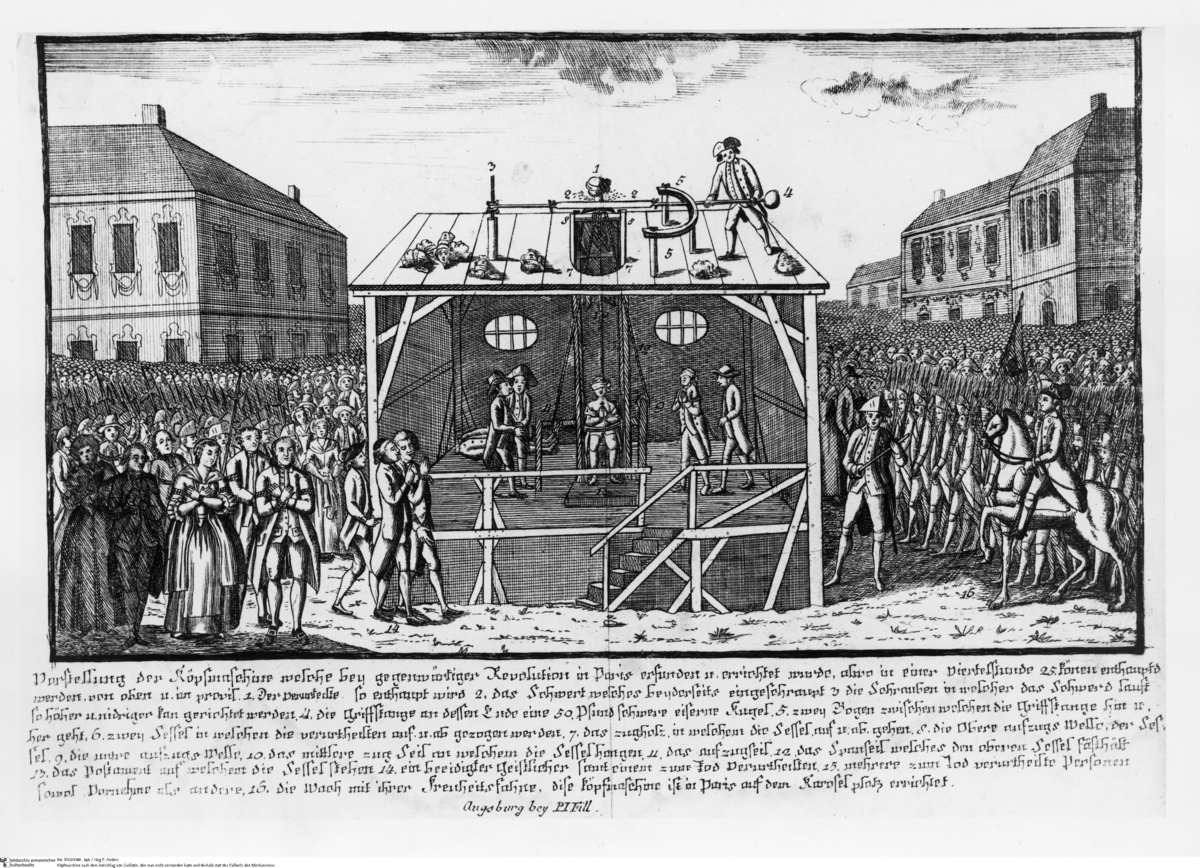Abstract
In designing the guillotine, French physician Joseph-Ignace Guillotin
had actually hoped to make executions more “humane.” His invention would
go on to become the symbol of the
terreur and the principal means of
executing enemies (or supposed enemies) of the Revolution. In 1798, it
was briefly introduced in a number of German territories as well. This
illustration, published in Germany in 1789, is based on a
misunderstanding of Guillotin’s design. Here, the condemned man, who
stands upright, is elevated onto a platform, where an executioner is
ready to behead him with a sword mounted on a pivot.
